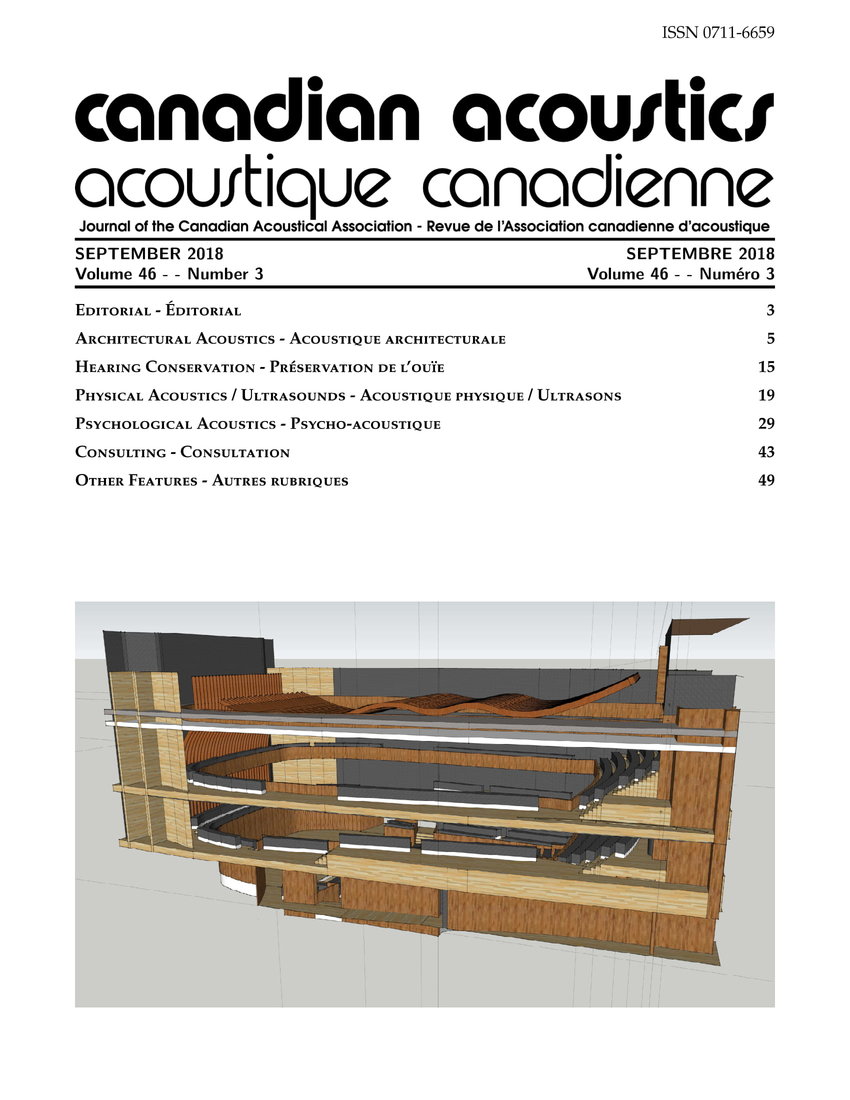Perspectives On How Acoustical, Non-Acoustical, And User Characteristics Should Be Considered In Multimodal Virtual Reality Research And Application
Keywords:
simulation, virtual environments, hearing, auditory, aging, sound booth, acoustics, realisticAbstract
The use of Virtual Reality (VR) environments is becoming more widespread in research and clinical/applied settings, including in the context of hearing research. This is in part due to the ability to recreate realistic, everyday challenges. As such, it is becoming increasingly important to characterize the differences between the acoustical properties of traditional soundbooths and new VR test environments. While there are international standards specifying the necessary acoustical properties of highly controlled sound environments, such as soundbooths, there are no currently specified best practices for the measurement and control of the acoustical properties of multimodal VR systems. In the present paper, we provide a general perspective on how acoustical, non-acoustical (e.g., visual displays, interactive devices), and user (e.g., age) characteristics are important to consider in developing and using multimodal VR systems. As a proof of concept, we report here a protocol for acquiring acoustical measurements (reverberation time, noise level, and signal-to-noise ratio (SNR)) to
characterize the acoustical properties of a standard soundbooth and compare these measurements to a representative multimodal VR laboratory (StreetLab at the Toronto Rehabilitation Institute). Measurements were made under conditions in which a) no lab equipment was operating, b) lab equipment (computers, fans, projection equipment, treadmills) was operating, and c) experimental stimuli (target speech, competing speech and other background noise such as simulated traffic sounds) were present or absent. We subsequently discuss the potential and unique consequences of these results to auditory perception and performance in younger and older user populations. We also consider the implications for implementing auditory content within multimodal VR systems more broadly speaking. Overall, there is great value in extending the knowledge that has been amassed from hearing research conducted in soundbooths by using the more ecological and realistic testing conditions afforded by rapidly advancing VR technologies. Indeed, such technologies could change the landscape of auditory research and approaches to practice in rehabilitative audiology. However, as these opportunities and technologies evolve, there is a need to establish appropriate guidelines and standards for designing, measuring, and accounting for the acoustical and non-acoustical properties of VR testing environments for research and other applications across various user populations.
Additional Files
Published
How to Cite
Issue
Section
License
Author Licensing Addendum
This Licensing Addendum ("Addendum") is entered into between the undersigned Author(s) and Canadian Acoustics journal published by the Canadian Acoustical Association (hereinafter referred to as the "Publisher"). The Author(s) and the Publisher agree as follows:
-
Retained Rights: The Author(s) retain(s) the following rights:
- The right to reproduce, distribute, and publicly display the Work on the Author's personal website or the website of the Author's institution.
- The right to use the Work in the Author's teaching activities and presentations.
- The right to include the Work in a compilation for the Author's personal use, not for sale.
-
Grant of License: The Author(s) grant(s) to the Publisher a worldwide exclusive license to publish, reproduce, distribute, and display the Work in Canadian Acoustics and any other formats and media deemed appropriate by the Publisher.
-
Attribution: The Publisher agrees to include proper attribution to the Author(s) in all publications and reproductions of the Work.
-
No Conflict: This Addendum is intended to be in harmony with, and not in conflict with, the terms and conditions of the original agreement entered into between the Author(s) and the Publisher.
-
Copyright Clause: Copyright on articles is held by the Author(s). The corresponding Author has the right to grant on behalf of all Authors and does grant on behalf of all Authors, a worldwide exclusive license to the Publisher and its licensees in perpetuity, in all forms, formats, and media (whether known now or created in the future), including but not limited to the rights to publish, reproduce, distribute, display, store, translate, create adaptations, reprints, include within collections, and create summaries, extracts, and/or abstracts of the Contribution.


